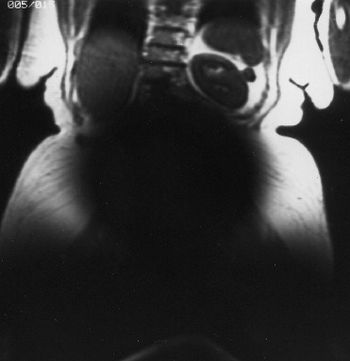Frank G. Shellock, PhD, FACC, FACSM
Articles by Frank G. Shellock, PhD, FACC, FACSM

This monograph focuses on the need to monitor body temperature in patients during MRI and discusses the sites to record temperature based on efficacy and stability of the measurement, as well as the response time (i.e., the temporal resolution) during temperature fluctuations.

On February 8, 2011, a new cardiac pacemaker received approval from the FDA, which for the first time allows MRI procedures to be performed in patients by following specific labeling requirements. http://www.medtronic.com/mrisurescan. The “MR Conditional” Revo MRI SureScan Pacing System from Minneapolis-based Medtronic Inc. was designed to minimize the potential interactions with the electromagnetic fields used during MRI examinations.

An insulin pump allows the replacement of slow-acting insulin for basal needs with a continuous infusion of rapid-acting insulin. By using an insulin pump, a patient can typically match the dosage of insulin to lifestyle and activities, rather than adjusting those to the body’s response to insulin injections. The advantages of using an insulin pump include the fact that an insulin pump replaces the need for periodic injections by delivering rapid-acting insulin continuously throughout the day via a catheter. It greatly simplifies the management of diabetes.

A pessary is a small medical device or form of pharmaceutical preparation that is inserted into the vagina or rectum and held in place by the pelvic floor musculature.

Although MRI examinations in patients with retained temporary epicardial leads, which consist of electrically conductive material, could theoretically lead to cardiac excitation or thermal injury, such leads are relatively short in length, usually do not form large loops, and are generally not believed to pose a significant risk during MRI procedures.

The application of a scleral buckle (note, this is a procedure, not an implant), or “scleral buckling,” is a surgical technique used to repair retinal detachments. It was first used experimentally by ophthalmic surgeons in 1937. By the early 1960s, scleral buckling had become the method of choice when the development of new materials, particularly silicone, offered surgeons new opportunities for improving their outcomes.

Most orthopedic implants are made from nonferromagnetic materials and, therefore, tend to be acceptable for patients undergoing MRI examinations. In vitro testing conducted at 1.5T and 3T has verified the safe aspects of orthopedic devices with regard to magnetic field interactions (see www.MRIsafety.com for a summary of this information).


The implantable, single-use 9526 Reveal Plus Insertable Loop Recorder can record EKGs in patients with cardiac arrhythmia. It's ferromagnetic components present no safety risk, but patients must be well-informed.


